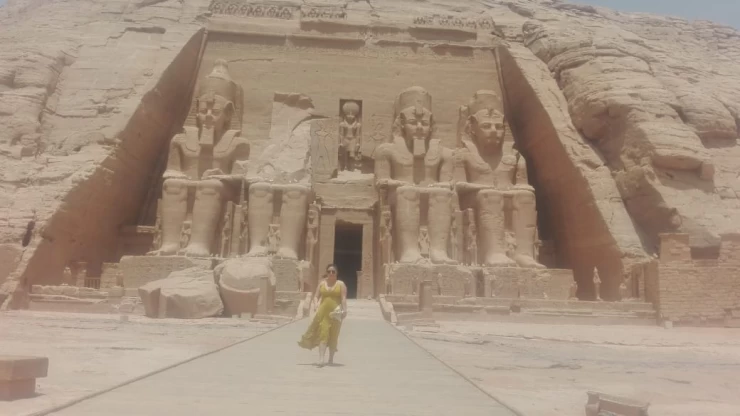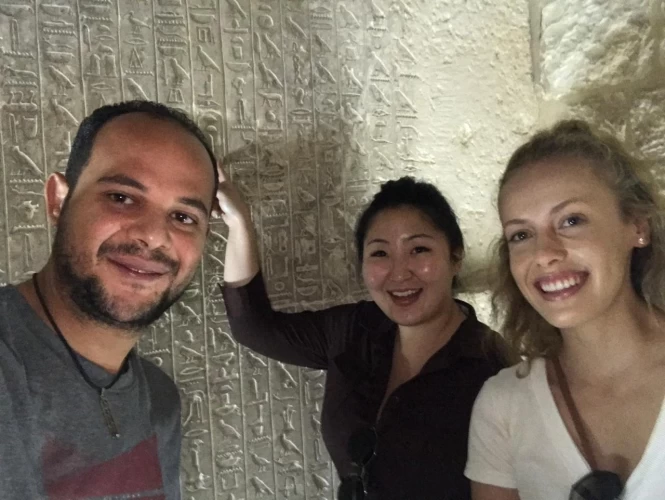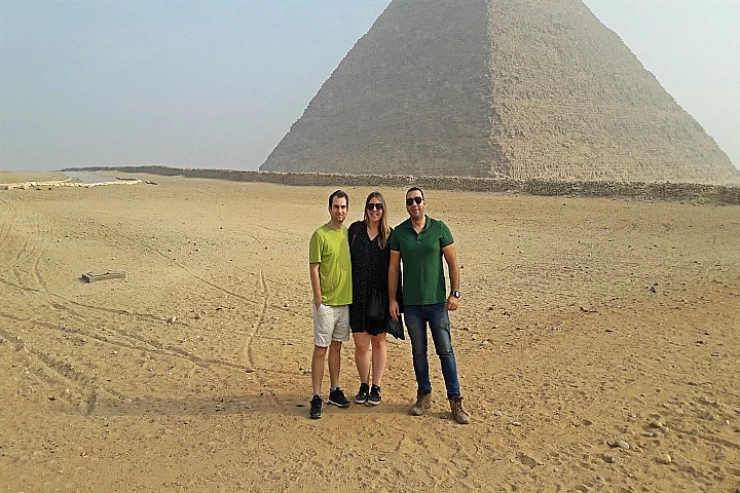Upon waking up, you will enjoy a fresh breakfast at your hotel, then meet your professional tour guide for the first time to begin your exciting tour today. We will take you to the famous Egyptian Museum, which consists of two vast floors. The ground floor is dedicated to heavy and massive antiquities such as stone coffins, statues, paintings, and wall reliefs. The upper floor is dedicated to lighter antiquities such as manuscripts, statues of gods, famous royal mummies, artifacts from daily life, mummy portraits, unfinished sculptures, precious Greco-Roman statues and vessels, and artifacts related to afterlife beliefs, as well as complete collections such as the Tutankhamun treasures.
You will visit the Great Pyramids of Giza, which were built in the shape of a triangle due to the symbolism of this geometric shape in ancient Egyptian culture. The triangle symbolized earth, sky, and water, the basic components of life. Some also believe that the pyramids were built in this shape to represent ascension to heaven and connection with the gods, an important principle in ancient Egyptian pharaonic religion. The construction of the pyramids was linked to sacred solar worship. The creation of the universe in ancient Egypt had several theories, the most famous of which was the Heliopolis theory, which postulated that the universe was composed of water from which the Earth emerged as a triangular peak. The idea of the pyramid was also linked to the sun's rays falling on the Earth, whose light creates a pyramidal shape. This is where the ancient Egyptians derived their distinctive pyramid concept.
You will also see the stunning Great Sphinx, whose original form was carved from rare edematode rock and later restored with layers of limestone. The statue is approximately 73 meters long from paw to tail, 20 meters high from base to the top of the head, and 19 meters wide at its hind feet. You will visit the Temple of Khafre Valley, which was buried beneath the sand until its discovery in 1852. This valley was built of limestone and faced with polished, solid Aswan granite. Facing the eastern side of the temple, it features a T-shaped hall supported by giant arches with wide, square corners. In front of these arches stood diorite statues of King Khafre, including a life-size model, now in the Egyptian Museum in Cairo, the most important and famous statue in human history.
We will stop for a break and lunch. You will also visit the Church of Abu Serga, distinguished by its unique and beautiful architectural and artistic elements that reflect the spirit of Coptic church architecture in Egypt. These include the altar, the baptistery, the inlaid veils, and the religious decorations that adorn its domes and walls. In addition, you will also visit the Holy Cave, where the Holy Family stayed. You will visit the Hanging Church, which gained widespread fame for several reasons, most notably the fact that the See of St. Mark was transferred to it from Alexandria in the eleventh century AD by Bishop Christodoulos, the sixty-sixth Patriarch, who was the first to hold a Mass there. The See of St. Mark remained there for a long time, until the fourteenth century AD, and several famous clerical councils met there in the twelfth century AD. The construction of this church on top of one of the towers of the Babylonian fortress is considered a symbol of Christianity's victory over tyranny.
You will visit the Ben Ezra Synagogue, which Jews claim is the site where the Prophet Moses prayed after God struck Egypt with a plague. Other stories narrate that the Prophet Elijah appeared to worshippers there more than once and that the synagogue houses the remains of the Prophet Jeremiah. If there is any remaining evidence, you will visit one of the largest and most beautiful markets in the world, the Khan el-Khalili Bazaar, where you will find all the beautiful goods and handicrafts you could be looking for. We will transfer you to your luxury hotel to rest and prepare for your travel to Luxor.
Meals: Breakfast, Lunch






















